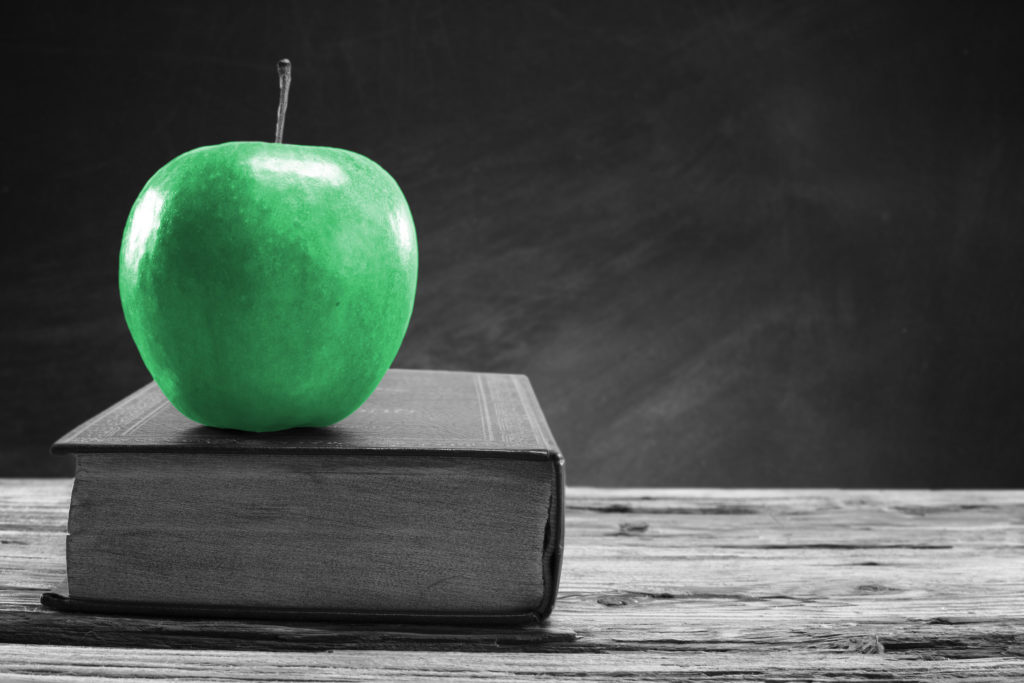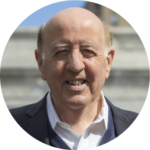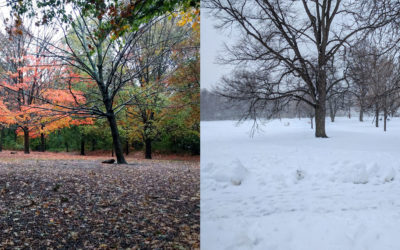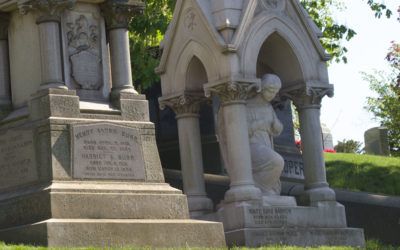Provocative Pairs
Learning with the Masters
Volume II: Humanities, Sciences, and More
By Robert DiYanni, New York University
Provocative Pairs
Learning with the Masters
Volume II: Humanities, Sciences, and More
By Robert DiYanni, New York University
Table of Contents
PART ONE: Humanities +
Literature
Chapter One
- Dante Alighieri and Geoffrey Chaucer
- Ralph Waldo Emerson and Henry David Thoreau
- Walt Whitman and Robert Frost
Chapter Two
- J. R. R. Tolkien and C. S. Lewis
- Toni Morrison and Maxine Hong Kingston
Chapter Three
- Gwendolyn Brooks and Kenneth Koch
- Tillie Olsen and Shirley Chisolm
Chapter Four
- Susan Sontag and Umberto Eco
- Zadie Smith and Chimamanda Ngozi Adichie
Chapter Five
- Harold Bloom and Camille Paglia
- George Orwell and Annie Dillard
- Adrian Barlow and Sheridan Blau
Rhetoric & Language
Chapter Six
- Mina Shaughnessy and Mike Rose
- Kenneth Burke and Ann E. Berthoff
Chapter Seven
- Deborah Tannen, John McWhorter
- Gregory Rabassa and Edith Grossman
- Pat C. Hoy II and William V. Costanzo
Chapter Eight
- Robert Boynton and Robert Gottlieb
- John McPhee and Jhumpa Lahiri
- Steven Pinker and Cornel West
Politics, Society, History
Chapter Nine
- Elizabeth Cady Stanton and Susan B. Anthony
- Franz Fanon and Hannah Arendt
Chapter Ten
- Edward Said and bell hooks
- Lani Guinier and Tim Wu
Chapter Eleven
- Giambattista Vico and Denis Diderot
- Alexander Solzhenitsyn and Hilary Mantel
Chapter Twelve
- Jill Lepore and Yuval Harari
- Walter Isaacson and Richard Cohen
- Robert A. Caro and Doris Kearns Goodwin
Arts—Music, Dance, Art & Architecture, Theatre, Film
Chapter Thirteen
- Leontyne Price and Leonard Bernstein Rob Kapilow
- Robert Shaw and John Eliot Gardiner
- Jacques d’Amboise and Twyla Tharp
Chapter Fourteen
- Bruce Adolphe and Fred Child
- Vincent Scully and E. H. Gombrich
- Elliot Eisner and Rob Kapilow
Chapter Fifteen
- William Shakespeare and George Bernard Shaw
- Lee Strasberg and Stella Adler
- David Mamet and August Wilson
Chapter Sixteen
- Peter Brook and Richard Taruskin
- Sir Ken Robinson and A. O. Scott
PART TWO: Sciences +
Math and Medicine
Chapter One
- Leonhardt Euler, G. H. Hardy & Srinivasa Ramanujan
- Eugenia Cheng and Steven Strogatz
- Paul Lockhart and Eric Mazur
Chapter Two
- Richard Selzer and Paul Farmer
- Oliver Sacks and Robert Coles
Chapter Three
- Lewis Thomas and Atul Gawande
- Danielle Ofri and Perri Klass
- Jerome Groopman and Averroes
Sciences, Natural and Social
Chapter Four
- Richard Feynman and Edward Tufte
- Carl Sagan and Stuart Firestein
Chapter Five
- E. O. Wilson and Stephen Jay Gould
- Brian Greene and Alan Lightman
Chapter Six
- Dan Ariely and Robert Frank
- Gregory Bateson and Clifford Geertz
Chapter Seven
- Daniel Kahneman and Howard Gardner
- Alison Gopnik and Paul Bloom
Education, Theory and Practice
Chapter Eight
- Johann Heinrich Pestalozzi and Friedrich Froebel
- Elizabeth Peabody and Mary McLeod Bethune
Chapter Nine
- Gabriela Mistral and Jaime Escalante
- Carol Dweck and Peter Johnston
Chapter Ten
- Robert Scholes and Michael Sandel
- Theodore Hesburgh and Ruth Simmons
Chapter Eleven
- John Holt and Hope Jahren
- A. S. Neill and Joseph Albers
Chapter Twelve
- Carl Rogers and Fred Rogers
- Robert Maynard Hutchins and Roosevelt Montás
Chapter Thirteen
- Benjamin Bloom and Lawrence Cremin
- Linda Darling-Hammond and Henry Louis Gates, Jr.
Potpourri—Sports, Self-Help, Magic, Floral Arranging, Hospitality & Gastronomy, Creativity, Commentary
Chapter Fourteen
- John Madden and Bob Costas
- Timothy Gallwey and Brené Brown
Chapter Fifteen
- Harry Houdini and Ricky Jay
- Gregor Lersch & Klaus Wagener and Ella Lawton Grant Campbell
Chapter Sixteen
- Conrad Hilton and Danny Meyer
- M. F. K. Fisher and Pauline Kael
Chapter Seventeen
- Adam Grant and Michael Michalko
- Thomas Friedman and David Brooks
Notes
Coda: Master Mentors & Teaching Credo
Epilogue: Family Mentors—Edward S. DiYanni and Mary H. DiYanni
Appendix A: My Influential Teachers and Mentors
Appendix B: Teaching and Learning with Colleagues and Friends
References
Preface
Each of us can learn from the world’s masters—past, present, and future. The most important thing we can learn from them may well be how to become better learners ourselves and better enablers of others’ learning as well.
We learn as we have been taught. We become what our teachers make of us—all those from whom we have learned, ourselves included. Who we learn from, how we learn from them, and what we learn count immeasurably. They count because, to a large extent, because we are what we learn.
We become what we learn. It makes us who we are.
The best masters inspire as well as instruct; they encourage and motivate us. We learn from their ideas and their ideals, from their principles and their practices. We learn, too, from their character, from their lives, from their actions, from what they commit themselves to and what they stand for, as they teach by living example.
For these masters, I consider briefly why they taught—what motivated them—along with how they taught—their teaching methods and practices. I consider, too, something of what we learn from them, providing an exposition of key ideas and values, accompanied by brief excerpts from their sayings and writings.
Not all the figures I discuss devoted their lives to conveying knowledge, though many did. Some were reformers; others developed philosophical and psychological perspectives, created practical strategies for learning, or formulated designs with implications for instructional policy and practice. Still others used multiple technologies—television, film, websites, print and digital magazines, video games, and more to reach audiences of millions, as have Tim Gunn, Martha Stewart, Oprah Winfrey, Sal Khan, and George Lucas, for example.
Over the years I have often wondered what it takes to become a master teacher, a teaching master. What makes a great teacher, a master teacher? What does it take to reach a level of art and craft such that teaching seems as natural as breathing?
I believe that the following considerations about mastering the art of teaching—becoming a master—apply across the board. They are relevant to mastering any art or craft, from cooking to broadcasting, from music and dance to medicine and engineering—across a multitude of disciplines, including literature and the rhetoric, the visual and performing arts, mathematics and philosophy, history and religion, and beyond.
Master educators, teachers and mentors of every type and stripe, continue to grow as individuals and as members of various academic, social, intellectual, teaching and learning communities. They remain curious, inquiring into all manner of subjects and disciplines, not just their own disciplines and specialties (though without neglecting those either—keeping up their disciplinary “chops”).
Masters sustain their passion for creating memorable experiences for their students. They identify and amplify the extra value they add to their students’ learning.
Masters demonstrate and model. They explain and explore. They engage their followers dialectically in dynamic interplay, teacher influencing student and student influencing teacher. And they do these things consummately well.
But masters also incite and excite those they instruct. They arouse their students’ curiosity. They set minds aflame and hearts ablaze. Master teachers release their students’ imaginations. They inspire and summon their students to mystery and initiate them into the glories of learning.
Masters stretch their students, pitching lessons just beyond their reach, arousing their effort and will, so that their students are able to do things they had no idea they could. Great teachers enable students to do things they cannot do themselves.
Masters awaken their followers’ powers and dreams, while inducing in them a love for what they love. Masters help others discover what they truly love themselves. As George Steiner has suggested, master teachers school their students for departure under their newfound powers (102).
In The Real Work: On the Mystery of Mastery, Adam Gopnik suggests that there is something magical about mastery, which involves accomplishment through accumulated practice, a summation of traditions of practice. Mastery of any art or craft, Gopnik suggests, grows out of generating flow from learned fragments, creating smooth fluency from sequences of small steps. He suggests, as well, that mastery “involves everything we do” and “engages the totality of ourselves.” Mastery is more than having acquired fluency with a discrete set of skills; rather, it shows forth “a unique human presence.” Master teachers, like other masters of their craft and art, “are not mere repositories of knowledge, but exemplars of a practice” (8-10), a practice that has become fully realized, embodied, and ensouled in the master teacher. Gopnik suggests, further, that mastery needs to be demonstrated in performance, fulfilled in practice, accepting the challenge courageously, what he calls “catching the bullet” (201-205). The final mystery of mastery is that the master takes the plunge, leaps into the unknown, accepts the risks, whatever they may be, and in the process, shows how it’s done.
In Zen in the Art of Archery, Eugen Herrigel explains how the master teacher remains always with the student, even as the student becomes proficient at what is being learned—archery, swordsmanship, calligraphy, science, history, music, interpreting literature, analyzing art, developing writing and thinking skills and every other skill imaginable. The physical teacher disappears, but the teacher’s spirit remains, as “teacher and pupil are no longer two persons, but one” (65). It’s a stage of learning where the pupil subsumes the teacher.
The way to become a master teacher, to master the art of teaching, is to never cease to be responsive to its enticements, to remain always a student of its mysteries. These are the mastery goals towards which all educators of whatevery type—and all masters, too, I believe, should aspire. In achieving these goals each of us can be, in George Steiner’s words, an “accomplice to transcendent possibility” (Lessons of the Masters 102).
Each chapter segment of Provocative Pairs includes two master influencers. I introduce the book with segments on Socrates and Leonardo da Vinci, Socrates as the West’s first great, influential thinker, and Leonardo as its supreme artist/scientist, gifted across many domains. Each chapter segment provides brief biographical notes about the figures, highlighting educational aspects of their lives. Each considers on one or more key educational element, including comments and quoted passages from each master’s works.
But why two figures per chapter? Why pair up the masters? Because doing so offers the opportunity for comparison and contrast—for examining relationships and discontinuities. Considering one master in light of another sharpens our understanding of both.
In Powers of Two, Joshua Shenk argues that two is the ideal number for all kinds of creative partnerships—from composing and performing songs, writing books and making movies and television shows, to inventing things (xvi-xxv). Some examples: Wilbur and Orville Wright, Vincent and Theo van Gogh, Simone de Beauvoir and Jean-Paul Sartre, Pablo Picasso and Henri Matisse, Susan B. Anthony and Elizabeth Cady Stanton, C. S. Lewis and J. R. R. Tolkien, Richard Rodgers and Oscar Hammerstein, John Lennon and Paul McCartney. In science, Watson and Crick and their double helix (overlooking, sadly, the contributions of Rosalind Franklin). In technology, Bill Gates and Steve Jobs as competitors, Steve Jobs and Steve Wozniak as collaborators. In politics, Ralph Abernethy and Martin Luther King, Jr., and a century earlier, Abraham Lincoln and Stephen Douglas. In psychology, Sigmund Freud and C.G. Jung. In sports, Chrissy Everett and Martina Navratilova, Larry Bird and Magic Johnson, Micky Mantle and Roger Maris, Roger Federer and Rafael Nadal (and later Novak Djokovic). And a few from the world of comedy: Laurel and Hardy, Abbott and Costello, Lucille Ball and Desi Arnez, Dean Martin and Jerry Lewis, Jackie Gleason and Art Carney, Mel Brooks and Carl Reiner, to cite a few additional notable ones.
Examples from literature include the creative pairings of Ralph Waldo Emerson and Henry David Thoreau, Dorothy and William Wordsworth, Nathaniel Hawthorne and Herman Melville, Thomas Wolfe and his editor Maxwell Perkins, Ahab and Moby-Dick, Hester Prynne and Arthur Dimmesdale (and Roger Chillingworth). And in more popular genres, Sherlock Holmes and Professor Moriarty, as well as Harry Potter and Lord Voldemort.
Shenk contends, rightly I think, that some creative collaborations derive from and thrive on a kind of psychic convergence, a compatibility of personality and thinking style. In such cases the cognitive frameworks of the creative pairs match. Other creative pairs work more by opposition and contestation, via competition rather than compatibility and cooperation. These adversarial creative pairs rival one another, motivating progress and perseverance, even inspiration resulting in a productive competitive rivalry. The competitive rivalries exhibit cognitive independence that pushes the creative rivals in their individually successful directions; the collaborative relationships exhibit cognitive interdependence, which fuels their joint artistic successes. Some creative pairs exhibit both tendencies—collaborative convergence and creative dissonance—John Lennon and Paul McCartney providing a notable instance.
Every chapter segment of Provocative Pairs concludes with considerations about learning inspired by the world’s masters paired. Most summarize key influential practices of the chapters’ subjects—Florence Nightingale and Clara Barton, Grace Hopper and Steve Jobs, I. M. Pei and Maya Lin, James Beard and Julia Child, Vince Lombardi and Phil Jackson, Martin Scorsese and Spike Lee, Conrad Hilton and Danny Meyer, Martha Stewart and Oprah Winfrey, to cite a few. Others emerge in imaginary dialogues between, for example, Plato and Aristotle, Søren Kierkegaard and Friedrich Nietzsche, Virginia Woolf and James Joyce, Ralph Ellison and James Baldwin, Sylvia Ashton-Warner and Paolo Freire, Stephen Sondheim and Andrew Lloyd Webber, Sal Kahn and George Lucas, among many others.
The considerations for learning I offer reflect my educational ideas refracted through the lenses of the world’s masters Throughout, ancient wisdom and modern ideas about learning coalesce in contemporary practice. I have kept the chapter sections short; each provides a brief overview of paired masters’ lives and work along with a taste of their practice. Collectively, the chapters present a smorgasbord of appetizing morsels to sample and savor. Taken together as well—and to shift the metaphor—the chapters invite you on an educational journey through the centuries and across disciplines and cultures.
My goal is to help curious, interested readers, like you, with whatever kinds of teaching and learning they engage in, however informal they may be. I illustrate with precept and example how you can become a better learner through developing skills and benefiting from the approaches of master thinkers through the centuries and around the world.
I envision my companion volumes as a way to help you and other readers get started (or re-started) developing their learning skills and expanding their knowledge. I hope to help each of you consolidate and extend your knowledge of what you learn, how you learn it, and why it matters. And I hope to help each of you engage more effectively in productive learning experiences.
Learning has always mattered, and it matters today and the years to come, I believe, more than ever. That’s why learning from and with the world’s great master thinkers is so important. The Covid-19 pandemic has disrupted the lives of students, but it has not destroyed their ability to learn. And Generative AI in the form of ChatGPT and other tools will continue tempting students to let bots do their thinking for them. But doing so will limit their intellectual development. I firmly believe that Provocative Pairs—Learning with The World’s Masters can contribute meaningfully to a renewed commitment to the successful learning of us all.

Current Writing Projects
My current writing projects are linked below: (1) a book on reading literature (Improvisations); (2) two books on getting smarter (fast and across the board); (3) a pair of memoirs about my teaching life (50 years+) and my life with music (even more years!). Also included is information about my biggest work-in-progress: an encyclopedic summa pedagogica, with the current title: Provocative Pairs—Learning with the World’s Masters (152 chapters—and counting—each chapter a dozen double-spaced pages, with most chapters devoted to a pair of great masters past and present).
For each of these works in the making, I have provided a table of contents and preface. A couple of them also include a sample chapter. An additional book I have in the works is Poems to Live By, for which I’ve included about a third of what I’ve written so far—also with a brief TOC and prefatory note.
Provocative Pairs—Learning with the Masters
Volume I:
Major Influencers Past and Present
Provocative Pairs—Learning with the Masters
Volume II:
Humanities, Sciences, and More
Simply Smart One
How to Get Smarter Fast
Simply Smart Two
How to Get Smart About Humanities
Simply Smart Three
How to Get Smart About Science and Math
Reading Literature: Improvisations and Explorations
The Teaching Life: Why Teaching Matters
Living with Music: A Glorious Journey
Poems to Live By
Essays: Reflections and Ruminations

Robert DiYanni
Author ⪢ | Professor ⪢ | Consultant ⪢
Robert DiYanni is a professor of humanities at New York University, having served as an instructional consultant at the NYU Center for the Advancement of Teaching and Center for Faculty Advancement. For these centers he conducted workshops and seminars on all aspects of pedagogy, consulted with faculty about teaching concerns, visited and observed classes, and provided a wide range of pedagogical consultative services. Professor DiYanni serves on the faculties of the School of Professional Studies and the Stern School of Business at NYU. He earned his undergraduate degree in English from Rutgers University, attended a Master of Arts in Teaching program at Johns Hopkins University, and received a Ph.D. in English Language and Literature from the City University of New York Graduate Center.
In addition to his work at NYU, Dr. DiYanni has taught at City University of New York, at Pace University, and as a Visiting Professor at Tsing Hua University in Taiwan and at Harvard University. As a high school teacher for four years and a college professor for more than four decades, Professor DiYanni has taught students from eighth grade through doctoral candidates. Most of his teaching, however, has been with college and university undergraduates. His numerous workshops, offered in more than twenty countries, have been attended by secondary school teachers and administrators, as well as by undergraduate college and university faculty and administrators.
Dr. DiYanni has written and edited numerous textbooks, among them, Literature: An Introduction; The Scribner Handbook for Writers (with Pat C. Hoy II); Arts and Culture: An Introduction to the Humanities, (with Janetta Rebold Benton), the basis for a series of lectures given at the Metropolitan Museum of Art; and Modern American Poets: Their Voices and Visions, which served as a companion text for the PBS television series Voices and Vision, which aired in the late 1980s.
You may also want to read these…
Comparing Poems
Comparison is one of the best ways of teaching anything; it is especially useful for reading and teaching…
The Widow of Ephesus
Once there was a certain married woman in the city of Ephesus, whose faithfulness to her husband…
Villanelle Variations
“I learn by going where I have to go,” writes Theodore Roethke in “The Waking.” “The art of losing…


